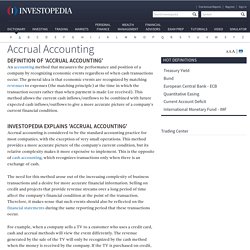

Fair Value Definition. How do you calculate company equity? What is the difference between earnings and income? The differences between earnings and income change depending on the context.

Technically speaking, personal earnings are just one way to generate income. In daily conversation, even among some financial professionals, the two terms are often used interchangeably. When it comes to business and financial reports, retained earnings are the accumulation of net income over time. Earnings Vs. Income for American Households The U.S. Earnings make up the largest and most common income source. Retained Earnings Vs. Businesses refer to earnings and income in multiple ways, especially in the financial statements or in a quarterly earnings report. Net income is equal to gross profit less cost of goods sold (COGS), or operating income, minus all fixed costs and other expenses. What can I learn about a company by studying its earnings report? Fundamental analysts often pore over quarterly earnings reports when the reports arrive, hoping to gain an inside track on the health of their investments.

Since each company has some leeway about what information to present and how to present it in the company's reports, there is no single universal process by which to examine the reports. If you can figure out how to examine one, however, you are able to track growth rates; hone in on profit margins and cash flow; and spot major signs of risk before they materialize. Looking Back at Forward-looking Estimates Most earnings reports are preceded by an earnings estimate. You come across lots of headlines in the financial press about one company exceeding estimates or another failing to meet expectations. Always keep an eye for major differences between what the company expects, or the estimate, and what the market really bore, or the earnings report. Earnings, Cash Flow and Profit Managers are paid to make money. Vertical Analysis. How To Calculate Return On Investment (ROI)
Return On Equity (ROE) Definition. DEFINITION of 'Return On Equity - ROE' The amount of net income returned as a percentage of shareholders equity.

Return on equity measures a corporation's profitability by revealing how much profit a company generates with the money shareholders have invested. ROE is expressed as a percentage and calculated as: Return on Equity = Net Income/Shareholder's Equity Net income is for the full fiscal year (before dividends paid to common stock holders but after dividends to preferred stock.) Also known as "return on net worth" (RONW). Liquidity Ratios Definition. DEFINITION of 'Liquidity Ratios' A class of financial metrics that is used to determine a company's ability to pay off its short-terms debts obligations.

Generally, the higher the value of the ratio, the larger the margin of safety that the company possesses to cover short-term debts. BREAKING DOWN 'Liquidity Ratios' Common liquidity ratios include the current ratio, the quick ratio and the operating cash flow ratio. Different analysts consider different assets to be relevant in calculating liquidity. Profitability Index Definition. DEFINITION of 'Profitability Index' An index that attempts to identify the relationship between the costs and benefits of a proposed project through the use of a ratio calculated as: BREAKING DOWN 'Profitability Index' A ratio of 1.0 is logically the lowest acceptable measure on the index.

Any value lower than 1.0 would indicate that the project's PV is less than the initial investment. The Essentials Of Corporate Cash Flow. If a company reports earnings of $1 billion, does this mean it has this amount of cash in the bank?

Not necessarily. Financial statements are based on accrual accounting, which takes into account non-cash items. It does this in an effort to best reflect the financial health of a company. However, accrual accounting may create accounting noise, which sometimes needs to be tuned out so that it's clear how much actual cash a company is generating. Accounting Basics: Introduction. By Bob Schneider Accounting is a glorious but misunderstood field.

The popular view is that it's mostly mind-numbing number-crunching; it certainly has some of that, but it's also a rich intellectual pursuit with an abundance of compelling and controversial issues. Accountants are often stereotyped as soulless drones laboring listlessly in the bowels of corporate bureaucracies. But many accountants will tell you that it's people skills, not technical knowledge, that are crucial to their success. And although it's often thought of as a discipline of pinpoint exactitude with rigid rules, in practice accountants rely heavily on best estimates and educated guesses that require careful judgment and strong imagination.
Actually, stereotyping accounting and accountants, either positively or negatively, is useless because accounting involves so many different activities. Accrual Accounting Definition. DEFINITION of 'Accrual Accounting' An accounting method that measures the performance and position of a company by recognizing economic events regardless of when cash transactions occur.

The general idea is that economic events are recognized by matching revenues to expenses (the matching principle) at the time in which the transaction occurs rather than when payment is made (or received). This method allows the current cash inflows/outflows to be combined with future expected cash inflows/outflows to give a more accurate picture of a company's current financial condition.